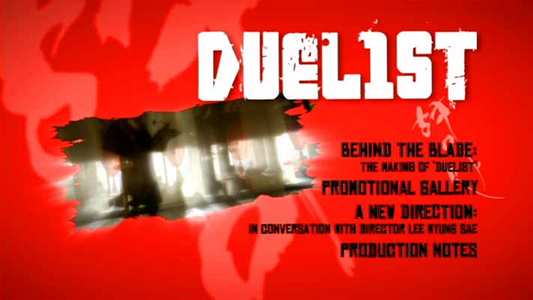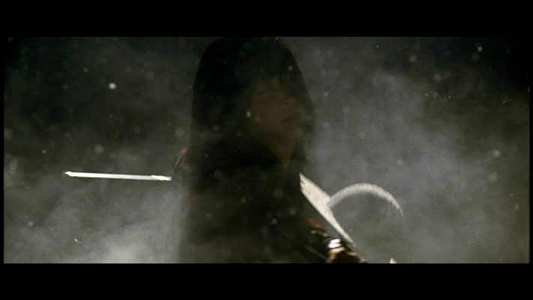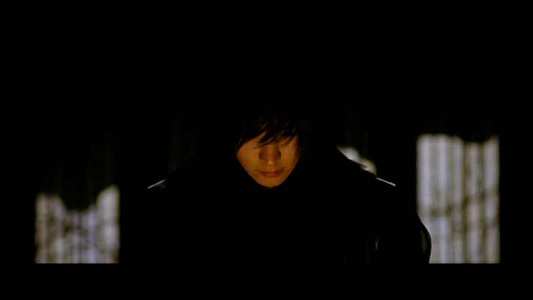Review of Duelist
Introduction
This probably sounds like an utterly absurd statement, but I often forget that cinema is a visual medium. When you get wound up in issues of plot and story, of actor performance and editing wizardry, the fact that you are presented (initially) with a moving photographic image some fifty feet high tends to lack importance when it comes to criticism. Filmmakers are photographers after all, and photographic work just like film can be seen in various lights. Talentless hacks like myself when presented with even an idiot-proof camera invariably produce out of focus decapitations with a cameo from my thumb. There are those who can bring to life the adage `a picture is worth a thousand words` and produce work that provokes thought and comment, capturing moments in time. Then there are those photographers who can create works of art that transcend the moment. As goes photography, so does film, and once in a while a movie comes along that can be considered a work of art. Duelist is one such film, a 105-minute piece of celluloid magnificence that is breathtaking in its splendour.
Set in Korea of the past during the Joseon dynasty, Duelist concerns an undercover police investigation into a counterfeiting ring. The police follow the money trail into a marketplace, where they are stalled by the appearance of a masked swordsman, who cuts a swathe through the prime suspects and then vanishes. But this warrior has caught the eye of one of the police, a young knife fighter named Namsoon. While she pursues this enigmatic figure, dubbed Sad Eyes, it becomes clear that the counterfeiting ring is just the tip of the iceberg, and that destabilising the country`s economy is merely the prelude to the overthrow of the government, and Sad Eyes is a principal figure in the conspiracy. This isn`t good news for Namsoon, who after facing Sad Eyes in a duel has fallen for him.

Video
A film as lavish as Duelist deserves a good transfer. Fortunately the 2.35:1 anamorphic transfer from Premier Asia is flawless to my eyes. It`s clear and sharp throughout, and the lush colours come across with astounding clarity. The excellent set design, the costumes, the brilliant cinematography all get the best possible treatment with this disc. As the film gets a disc all to itself, there`s never any problem with compression artefacts or edge enhancement. This is as good as DVD gets, and the only way to improve on this would be a High Definition disc. It`s a good thing too, as Duelist is one of those films that tempts you to pause the film so you can hang the image on the wall.

Audio
Duelist gets a choice of DD 5.1 and DTS Korean soundtracks with optional English subtitles. The surround is strong and vibrant and makes full use of the soundstage for the action, music and dialogue. There is an ethereal quality to the story that is well conveyed through the audio design. The music is a little eclectic though, with styles varying from moment to moment, from classical to hip-hop.

Features
While both discs get the usual animated menus, the extras are confined to the second disc alone.
Behind The Blade: The Making Of `Duelist` lasts 45 minutes. This is a behind the scenes look at the film`s production, with all aspects from the shooting, the rehearsals, storyboarding to the stunt work, all getting the fly on the wall treatment. It is interspersed with the occasional snippet of an interview with the director Lee Myung-Sae, but the rest of the time you are required to place what you see in context, without benefit of a voiceover.
The Promotional Gallery contains 3 trailers, 3 TV spots and one music video. The original Korean material is presented in letterbox widescreen that auto-switched my TV to zoom, cutting the subtitles off at the bottom.
A New Direction: In Conversation with Director Lee Myung-Sae lasts 23 minutes. The director chats with a critic and the film`s composer. I`d tell you who they were, but the on-screen text remains un-translated. It`s a wide-ranging talk, which glides over critics, music, the work, and the state of the industry, the director`s ambitions and more.
In Production Notes you will find four featurettes that look at various aspects of the film`s production.
A Cut Above: Editing Duelist lasts 15 minutes and features an interview with the editor of the film.
Note Perfect: The Music of Duelist lasts 12 minutes and you can hear the composer speak.
Sword Play: Behind The Scenes With The Cast also lasts 12 minutes and offers interviews with the cast members and also a behind the scenes look at the rehearsals and training required to be able to perform in the fight sequences.
Finally The Cutting Edge: Creating The Visuals For Duelist covers the various aspects of the look of the film, from the sets and the art design to the costumes and props. Quite rightly, this is the longest of the featurettes coming in at 36 minutes.
While all the Korean dialogue is subtitled, none of the on-screen text is translated, so you`ll have to do without knowing who is speaking.

Conclusion
Duelist is unashamedly style over substance, but what unmitigated style! It`s a visual triumph, a relentless flow of alluring images and intricate choreography that enthral from beginning to end. I remember watching the Jet Li film Hero, with its delicate variation of colour schemes through the various scenes. Well that is as nothing as compared to explosive profusion of colour that makes up Duelist. From the sheer life of the opening scene in the market, to the bleached monochrome look of the final encounter, the look of the film waxes and wanes with the emotional content. The fights are thoughtfully choreographed. In form, in motion, the film is as impacting as The Matrix, yet possessing a delicate artfulness that is reminiscent of ballet.
Alas, we rarely watch films for beauty alone, and this is where Duelist falls down. The story is thin enough to be non-existent, and is often marginalized in favour of an extended bit of artfulness. The characters for the most part are merely ciphers, and more often than not their actions are in service to the plot, rather than through any genuine emotional response. This film is about the tragic love that forms between Namsoon and Sad Eyes, and the counterfeiting and conspiracy is merely the means to which that end is accomplished. Duelist is all about conveying emotion through visuals, and given that, there isn`t much left for the actors to do.
Duelist is visually striking, and the director does use several tricks and techniques to keep the attention of the audience. But he does over egg the pudding somewhat, and an early Benny Hill style Keystone cops sequence was ill advised. Still, there are moments aplenty that will stick after the end credits have rolled. There is a fight in an alleyway that still stays with me. The alley is half in shade, half in light, and of the two fighters, one remains obscured by darkness while the other is visible, although the light reflects off both their blades. It`s the sort of imaginative visual impact that typifies Duelist, and does much to mitigate the film`s many flaws.
Duelist is art. Its abundance of stunning imagery is something that will stick with you after the film has ended. You can watch this film and just marvel at the thought put into constructing the films various scenes, the cinematography, set design, costumes and fight choreography. The lack of a strong narrative may mean that this film will probably stay off your re-watch lists, but no matter, just watch Duelist once and be dazzled.
Your Opinions and Comments
Be the first to post a comment!